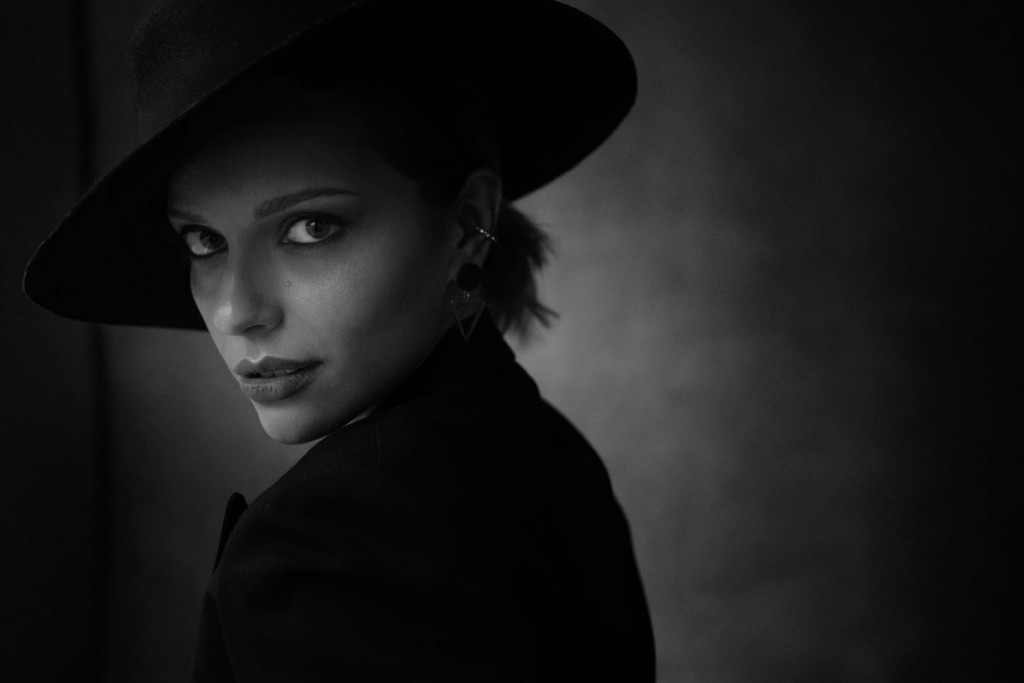
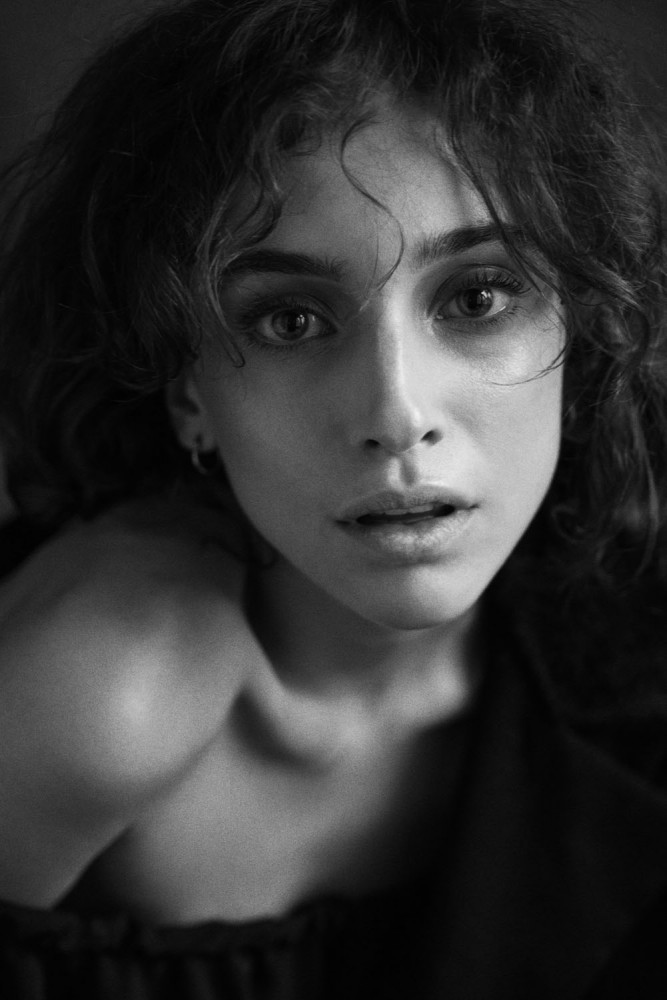
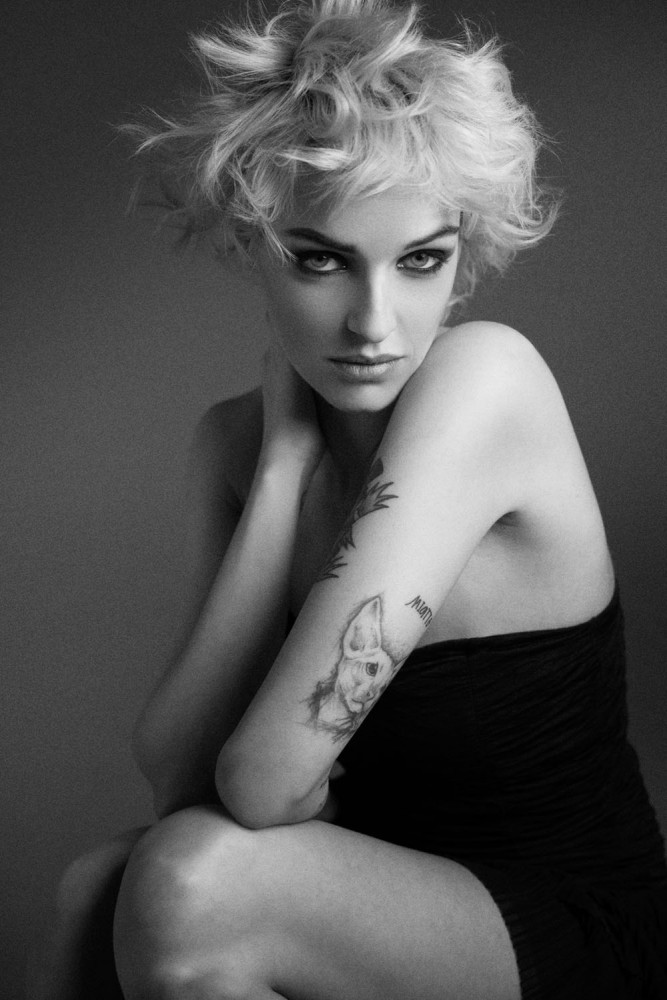
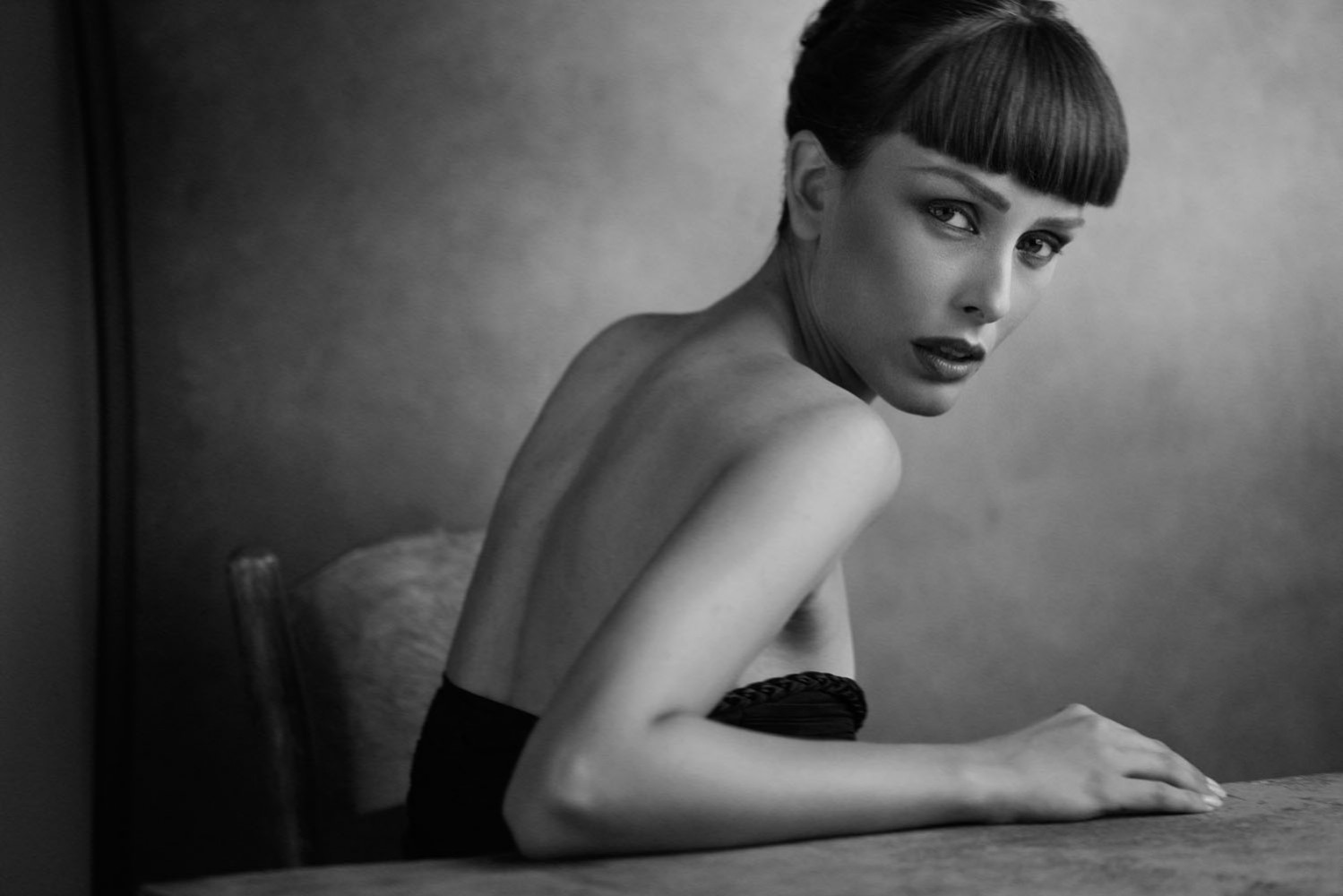
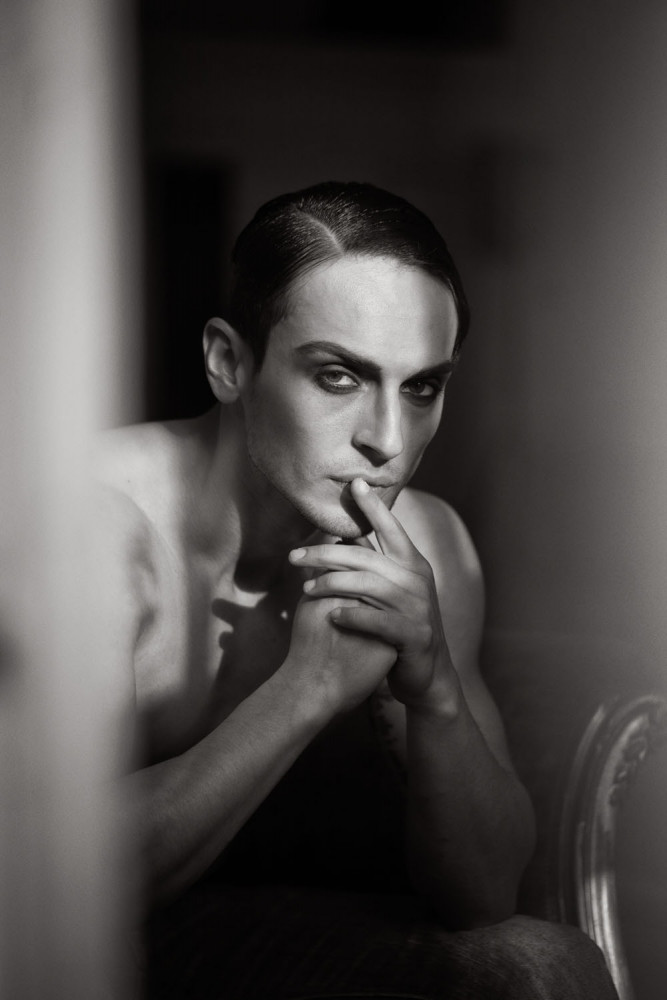
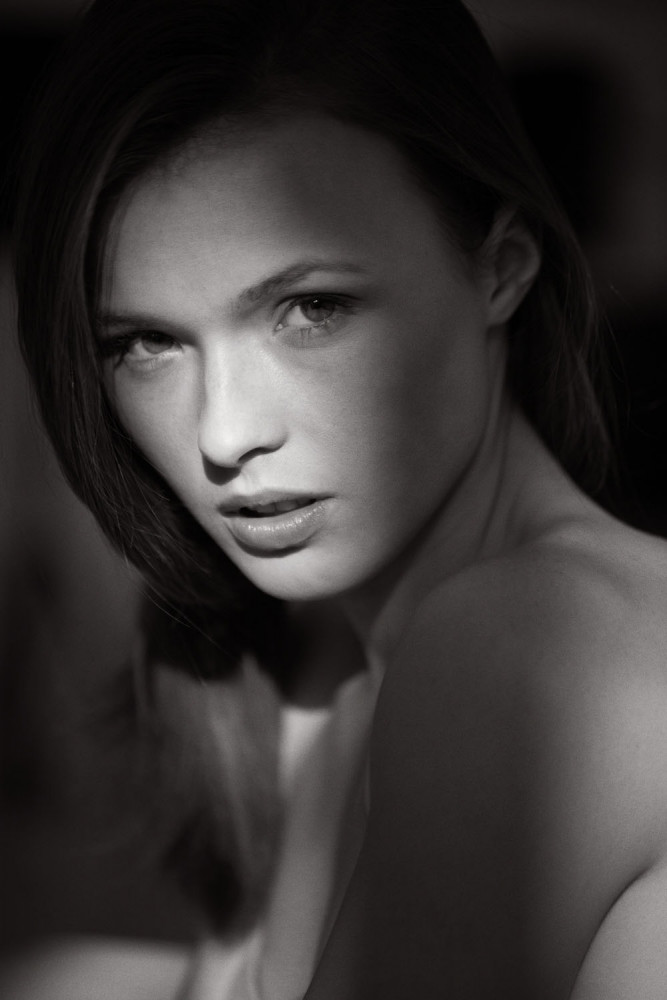
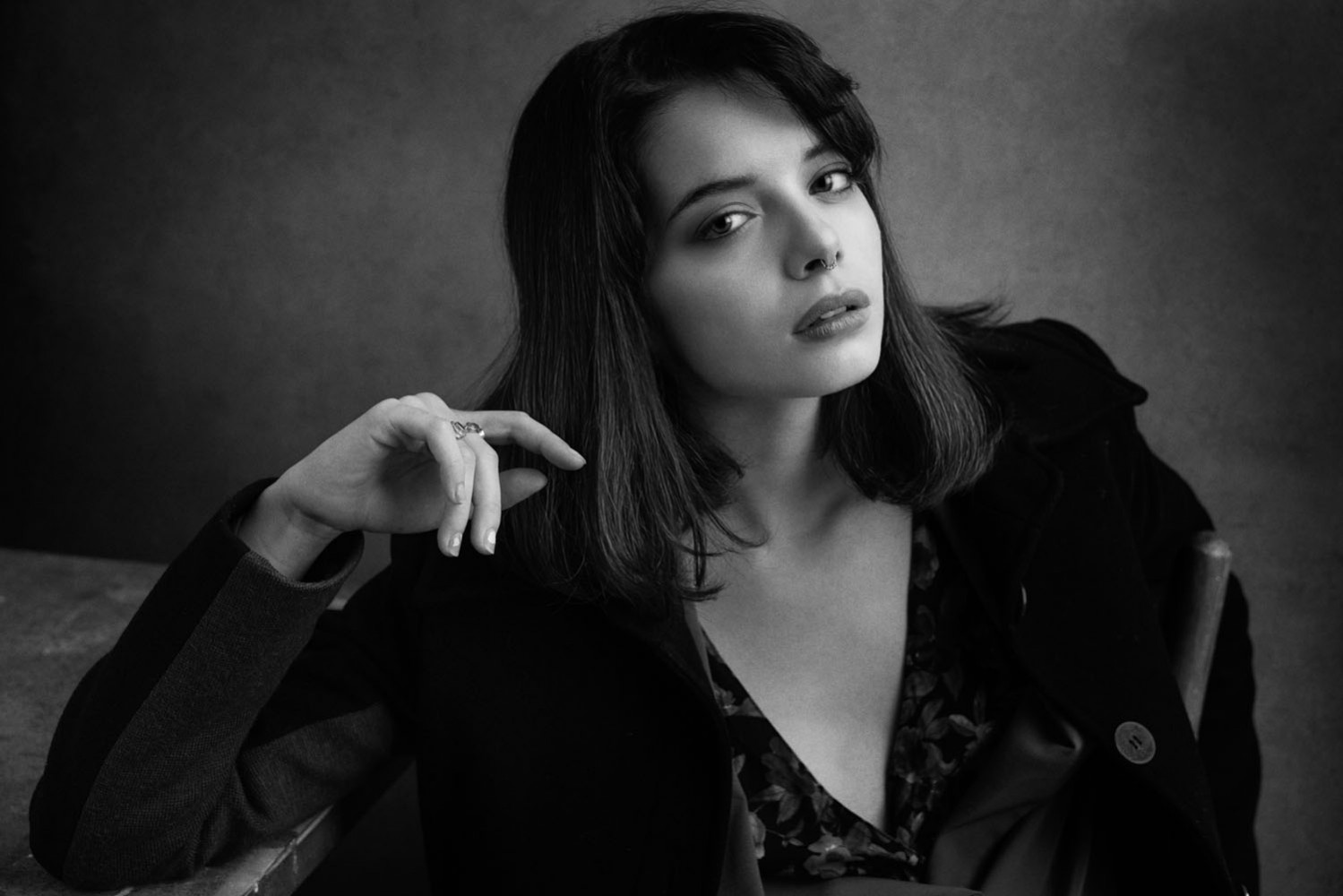
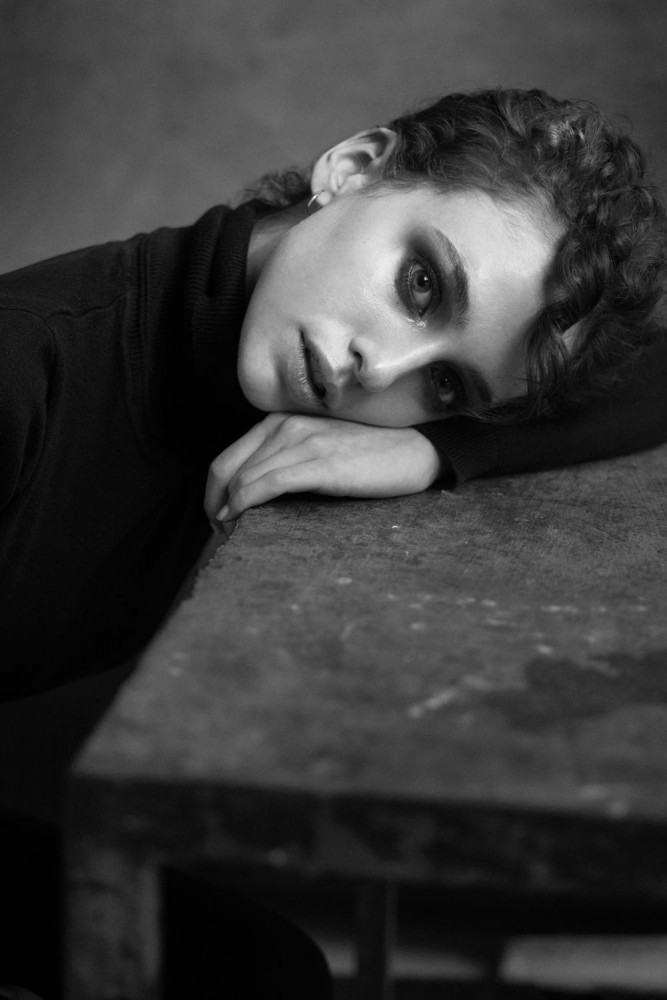
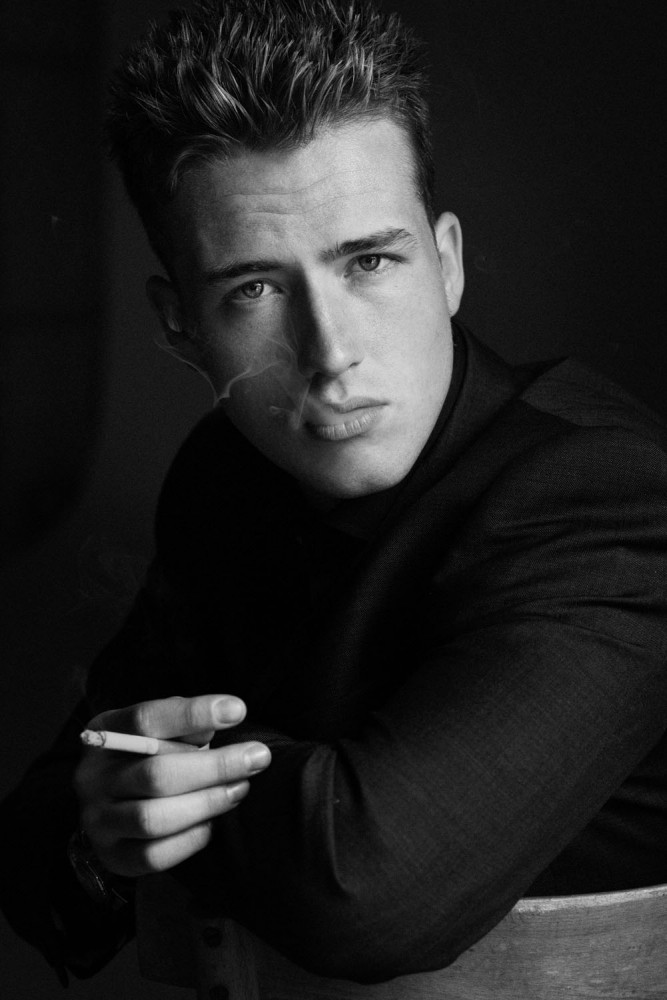
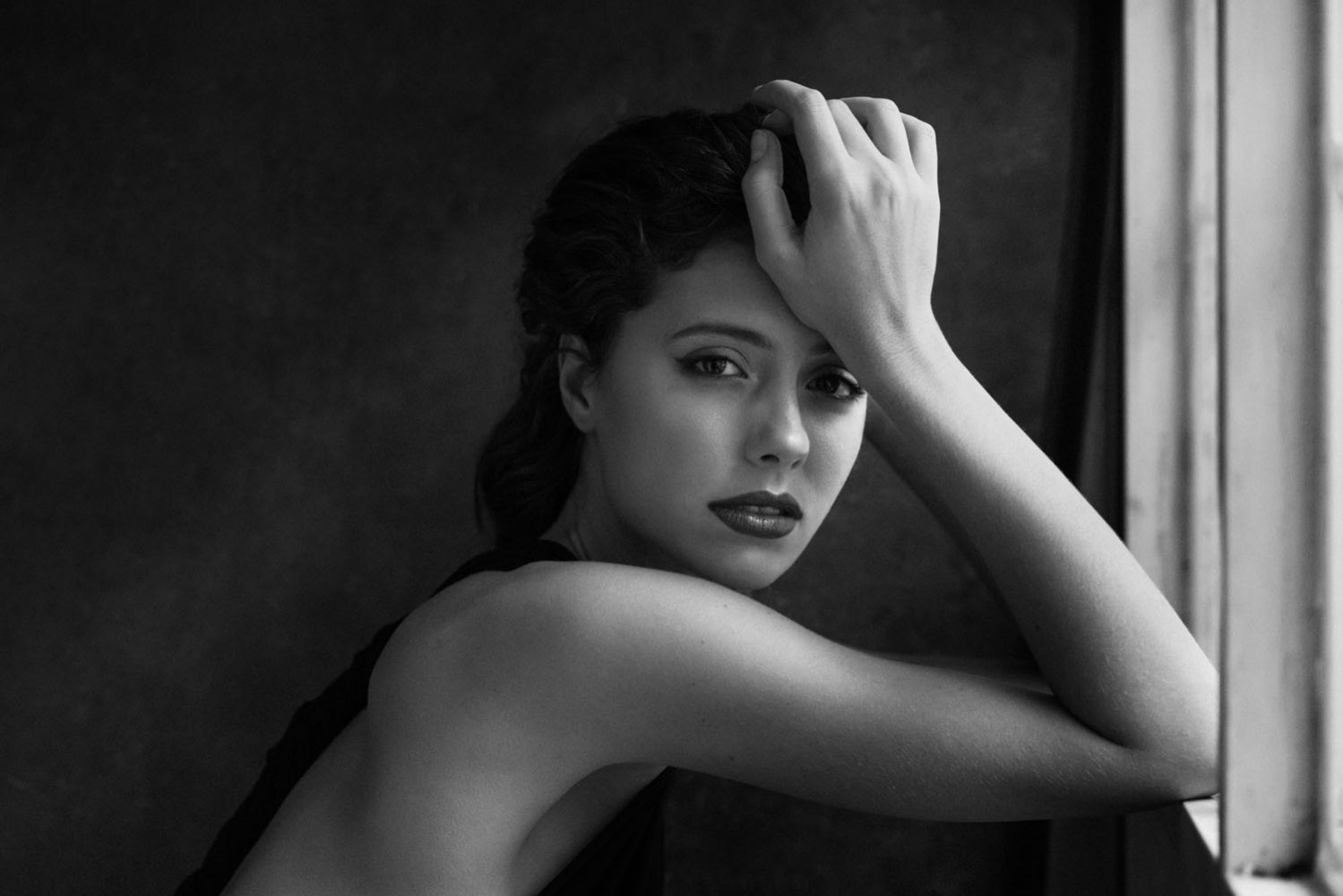
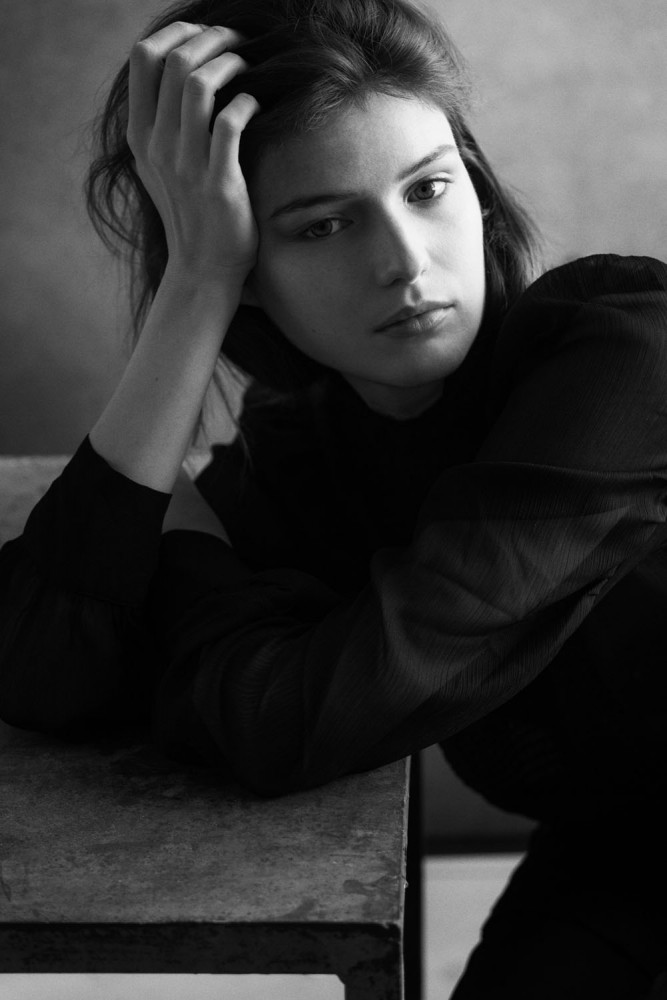
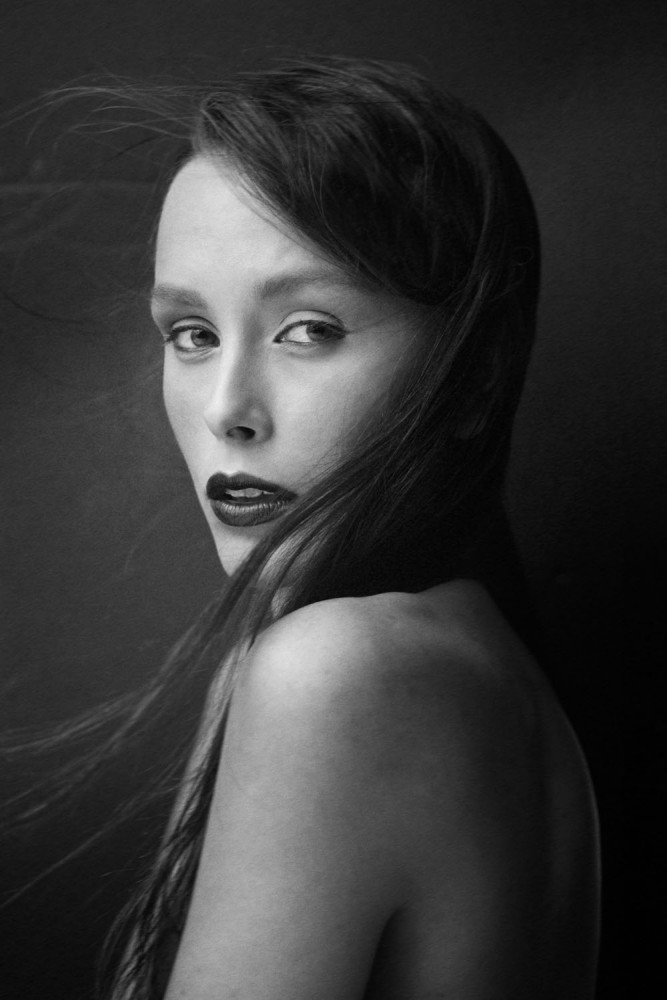
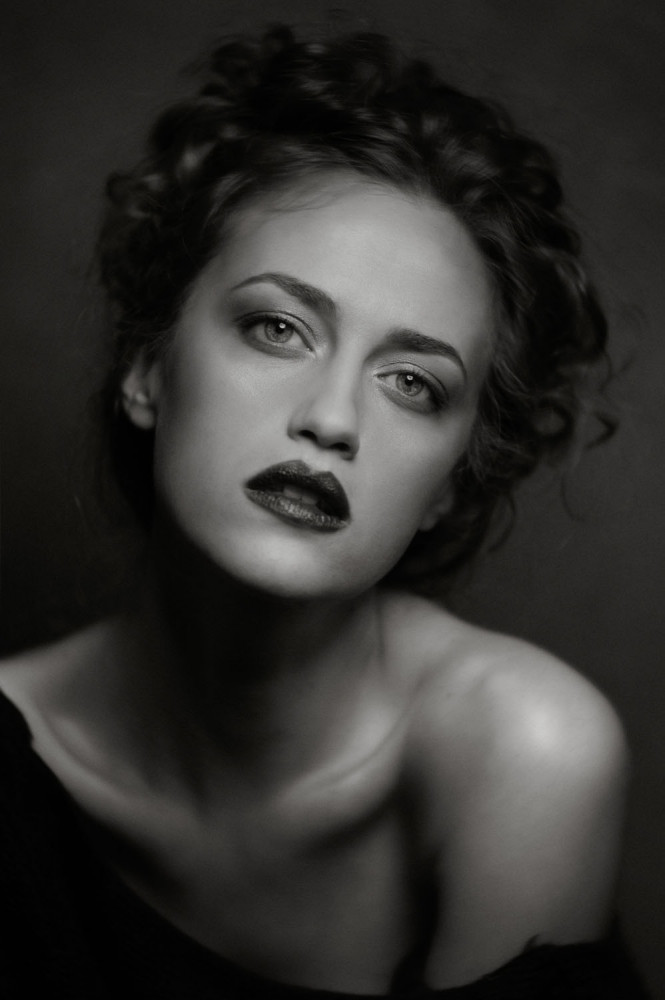
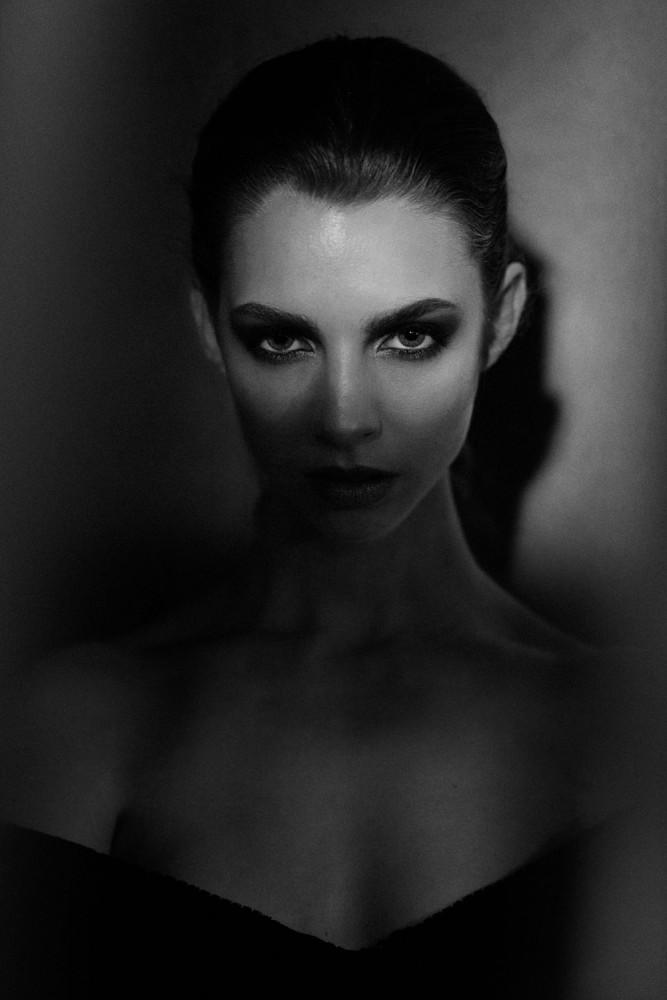














INTERVIEW
Eolo Perfido
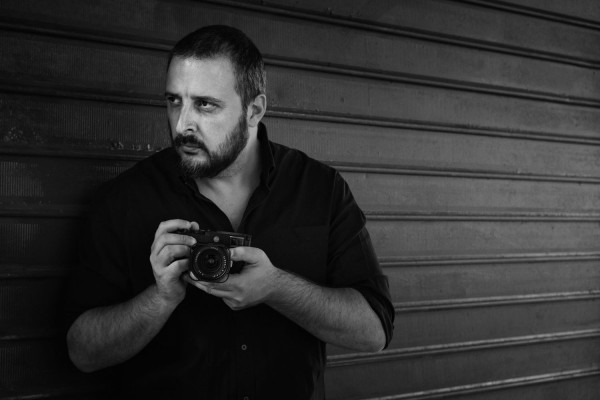
Photography Eolo Perfido Camera Leica SL2 with Vario-Elmarit-SL 24-90 f/2.8-4 Asph., APO-Vario-Elmarit-SL 90-280 f/2.8-4 and APO-Summicron-SL 90 f/2 Asph.
For years, the photographer was on a quest for expressive faces: he invited models, actors, as well as strangers into his photo studio – which is among the largest in Italy. The resulting series, titled Glances, is a homage to the classic portrait, a format that is central to Eolo Perfido’s work.
Here the artist talks about how he discovered portrait photography, the kind of person he enjoys having in front of his camera, and how he manages the get the best out of his subjects.
What would you say is the meaning of a portrait?
Each portrait is an approximation. Some portrait photographers try to express daring but sincere opinions through their photographs. They aim to convey something that comes close to the truth. Others see the subject as an ‘actor’ – a way to build characters that often have little to do with the person that is being photographed.
How did portrait photography come to be one of your main areas of focus?
That’s probably because the stories I had in mind always needed people to make them complete. I was born shy, but I learnt to be persuasive in order to become a portraitist. The photographic territory, that temporary space that is created during a photo session, requires a photographer who knows how to control the smallest details with a quick word, a deep look, and the right moments of silence.
What kind of portrait do you like the most?
I love the classic portrait in all its forms. I am very attentive as to how the anatomy is distributed within the frame because that is the ‘place’ that holds the gaze. When I create a portrait together with my subject – after all, a portrait is made by two people – I pay a lot of attention to details. Most of my time is dedicated to accompanying my subject in the search for a pose that will evoke a certain feeling, or a sense of poetry. The body is the root of the composition.
In your view, what makes someone a good portrait photographer?
The best portraitists are those who change after every portrait because the encounter has transformed them. The lesser ones are those who always take the same portrait, regardless of the subject they are photographing, in search of an often vague image that has haunted them for years.
What are the qualities of a good subject?
Beauty, grace and intelligence. The ability to control their body, and a desire to indulge in the looks.
How would you describe your approach to your subjects?
I like to bring my subjects into my world. In order to do so, I ask them to play a character. I try to awaken or discover their acting ability. In that sense, their contribution is fundamental and very personal. A portrait is always created by two people, and what emerges is unique each and every time. I like to think of my photography as a movie that has been synthesised into a single frame.
For Glances, you photographed a number of Italian celebrities. How did this come about?
The portraits in this series are the results of both assignments and independent sessions spanning the past few years. I invited actors and models, but also strangers, to pose in my studio. I have a particular fondness for actors. Their ability to immerse themselves and convey so many different attitudes is a treasure for any portraitist.
What do you especially appreciate about working with actors?
Their ability to transform themselves, like a chameleon that changes according to the context. In this case, the context is the photographer and the situation he has built. However, never assume that actors aren’t shy in front of the camera. Making a film and posing for a photograph are two very different things, there are different emotions involved.
Who did you work with in terms of makeup, hair, accessories etc. and what do you appreciate about your collaborators?
If I can, I always work with the same professionals, some of whom have followed me for over twenty years. I would like to mention the makeup artists Domenico Sanna, Mauri Menga, Valeria Orlando and Elvira Toffoli, my studio manager Antonella Catanese, as well as my collaborators Fabio Timpanaro and Lorenzo Razzino, and my studio assistant Flavia Castorina. Without their help, their vision and professionalism, I would have created less refined images.
In terms of cameras, what is your favourite working tool?
I own several Leica Camera systems – the SL, Q2, M10 and CL. I chose the Leica SL2 for my studio work for several reasons. The first is reliability. I have never been let down by a Leica. For someone who is often presented with once-in-a-lifetime opportunities to photograph celebrities, a camera’s reliability in all conditions is a fundamental requirement. As for the SL2, I love the rendering of the files. I don't know if it's the lenses with their three-dimensionality or the sensor, but the images I get are always wonderful. It's difficult to put into words, but it has to do with volume, colour dynamics and high ISO behaviour.
Your images have a cinematic look – your use of light is exceptional. What can you tell us about the significance of light in your work?
If the subject is the raw material with which the photographer constructs the portraits, the light is the ink with which the photographs are written. I am an advertising photographer, so I had to learn to work with the most complex types of illumination.
What type of lighting appeals to you the most?
When I’m shooting portraits, I prefer to keep it simple. Like the great masters of the early twentieth century, I love to work with a single source of light, which can be ambient or artificial. I generally like to work with consistent lighting because it allows me to see the changes of the light on the subject’s face in real time, and I can modify the direction and intensity with a fluidity that really helps the cinematic dynamics of my portraits.
How would you like your images to be perceived, and how would you describe the purpose of your photography?
Photography is a conversation. Each person will see something different. In this flow of visions, the photographer positions himself as a privileged interlocutor. I'm not looking for a univocal vision – instead, I like to think of my images as generators of very different narratives according to the observer.